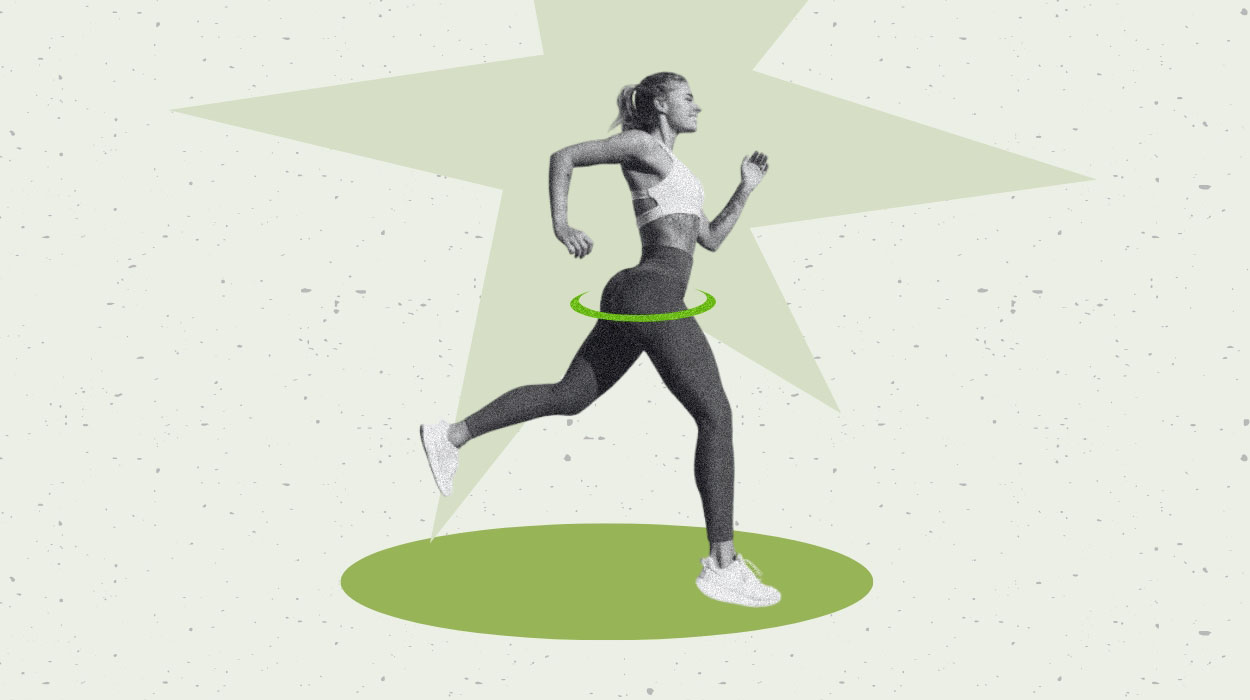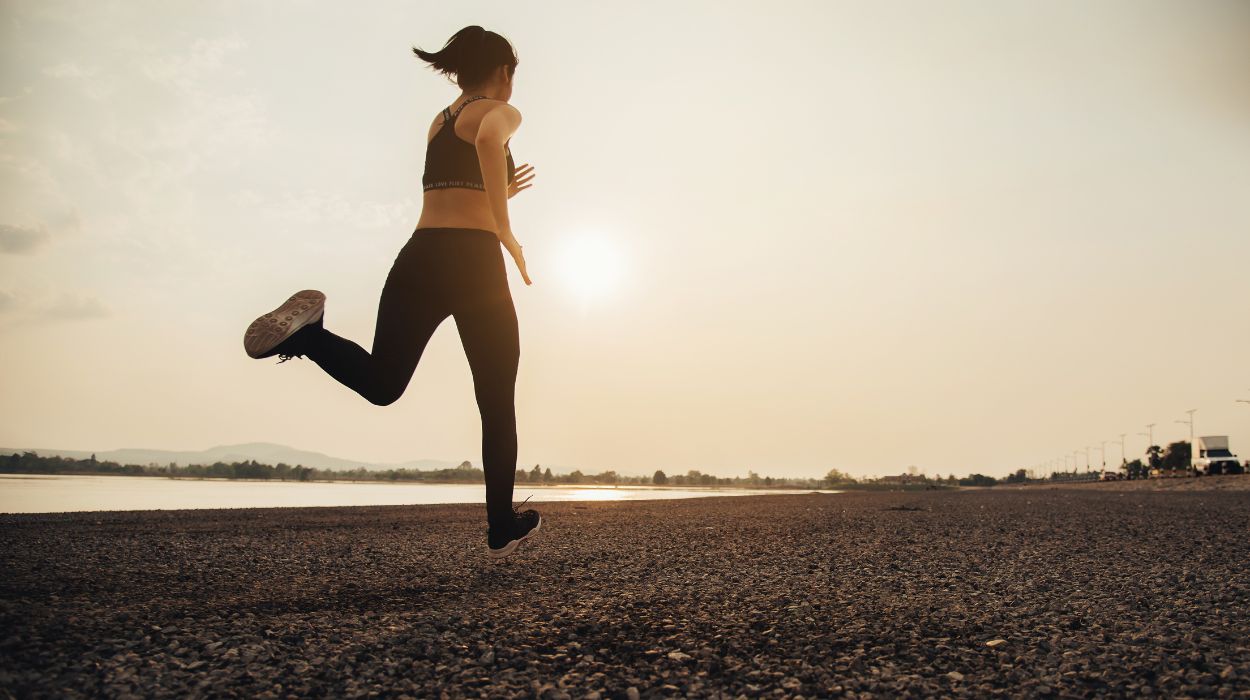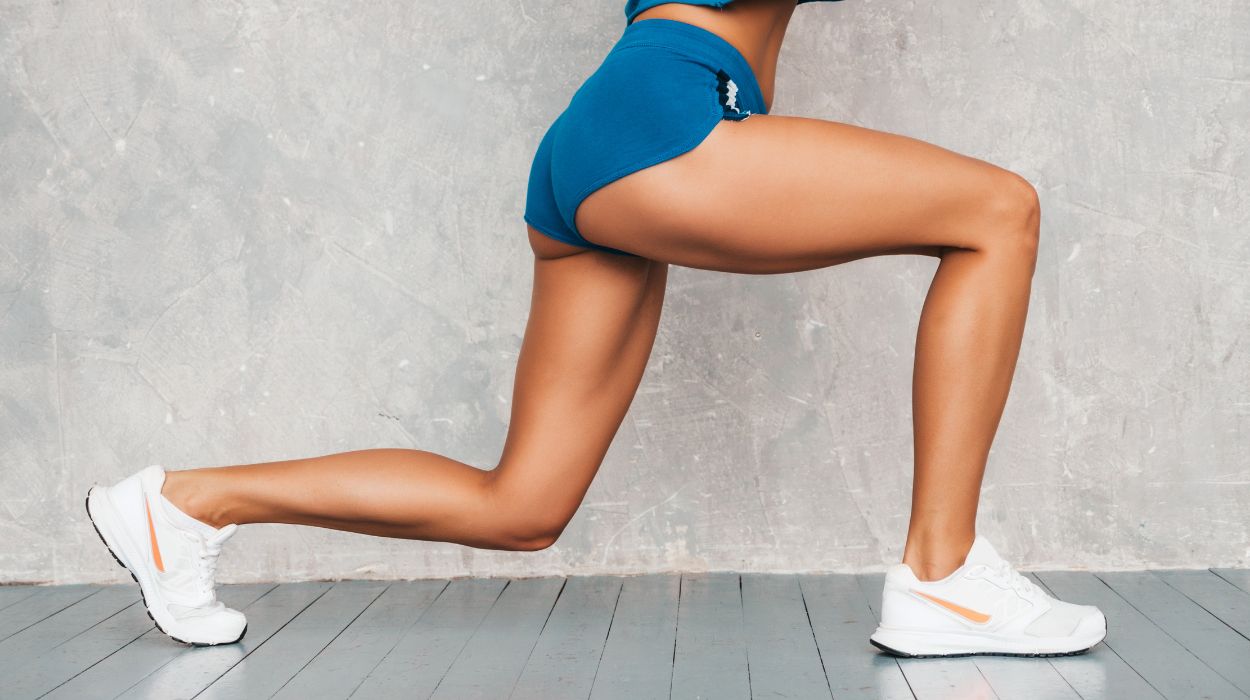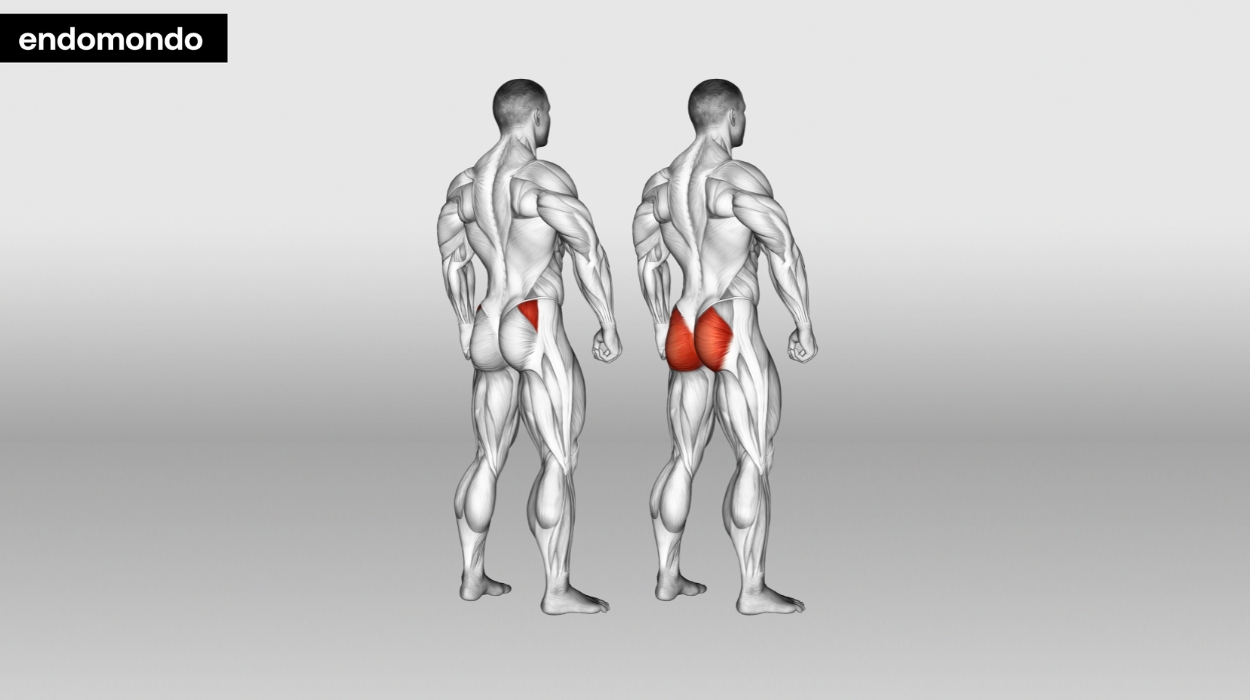
Running can be a great exercise for those aiming for weight loss. And when combined with supplements, you can reach your weight loss goals even faster.
But running offers many great benefits. These include improving cardiovascular health and increasing oxygen flow to the brain strengthening the immune system and reducing stress.
Running is also good for another asset.
Running can make your butt bigger, but it could also make it smaller, depending on your body type. It also depends on the type and duration of running you’re doing. Here is how running can help you get a bigger bum.
Does Running Make Your Butt Bigger?
Yes, running can make your butt bigger, but only if you run in a specific way. Before signing up for a marathon to put some junk in your trunk, understand which running will build a bigger booty.
What Kind Of Running Makes Your Butt Bigger?
If you have ever seen professional or marathon runners, you know they aren’t exactly known for their bubble butts. Sprinters and shorter-distance runners, on the other hand, are more commonly known for their perky posteriors.
This is because endurance running and sprinting work different muscle types[1] and burn fuel differently. So if you want to build a bigger bum, you might consider including some sprint work in your training.
Here is how running builds muscle in your booty.
Long-Distance Running Vs. Sprinting

Long-distance running involves type I muscle fibers,[2] also known as slow-twitch fibers. These muscles are used for lower-intensity, long-term, aerobic endurance activities. Examples of these include swimming, cycling, and running long distances.
Aerobic exercises[3] rely on oxygen getting to the muscles to help burn fuel and sustain longer periods of exercise. Other benefits of aerobic exercise include lower blood pressure, lower resting heart rate, and better control of blood sugar.
Aerobic or cardiovascular exercise burns stored fat and can benefit those focused on losing body fat without gaining muscle.
Sprinting or running in short intervals involves type II fibers, also known as fast-twitch muscle fibers. These muscles are used for higher-intensity, short-term, anaerobic endurance activities. This includes short bursts of running and sprinting as well as muscle-building activities like lifting weights or resistance training.
Anaerobic exercises rely on muscles burning glycogen, which is sugar stored in muscles for energy. Type II muscle fibers tend to have a larger diameter than type I fibers. This can play a role in hypertrophy or increased muscle size.
Other benefits of anaerobic exercise may include weight loss, muscle building or improved muscle tone, and increased bone density. Anaerobic exercise is good for those focused on increasing their power or building muscle.
Running Tips For A Bigger Butt
The gluteus maximus is the largest, heaviest muscle in the body. It can draw a lot of attention, especially if it is toned and firm. So, if you want to focus on building your glute or butt muscles through running, here is what you need to know.
Always begin with a warm-up, even if you are not new to running. Warm up for at least 10 minutes by marching in place, walking, or climbing a steep hill or stairs.
Next, try alternating one minute of sprinting with two minutes of walking. When you’re sprinting, you should be running at a moderate intensity. When your minute of sprinting is up, you should be breathing hard but not completely out of breath.
Keep this up for 20-30 minutes and repeat three to four days per week.
Cool down and stretch for at least 10 minutes at the end of each workout.
As you grow stronger, challenge yourself by sprinting on an unstable surface, such as sand. Another way to target the glutes is to run uphill. When the thigh rises higher than the hips, as in climbing stairs or running uphill, the glute muscles are engaged.
Don’t forget to hydrate and rest as needed. Overexertion and fatigue can lead to injury or burnout.
Other Exercises To Get A Bigger Bum

There are various ways to build your glute muscles besides running. Doing a variety of exercises, such as resistance training or bodyweight exercises, can help give you a well-rounded, toned physique.
If you go to the gym, look for the leg press machine or head to the squat rack. If you’re a minimalist or don’t have a gym membership or equipment, opt for these bodyweight exercises: squats, lunges, kickbacks.
As you build muscle in your glutes, you can further shape your physique by burning fat. Changes in your diet and other supplements can help boost fat metabolism.
Does Running Burn Fat?
If you aim to lose weight and burn fat, then exercise and eating in a calorie deficit are necessary. A one-year study showed running more than 5k per week[4] with diet changes resulted in fat mass loss. A systematic review and meta-analysis reported aerobic exercise[5] and high-intensity interval training led to body weight and fat loss.
Running sprints is considered a great fat burner because it is a high-intensity interval activity. Exercise intensity is important for losing fat but resistance training is required for building muscle mass and to reduce muscle loss.
What Does Running Tone Your Butt?
Your butt or buttocks are made up of several muscles, the largest of these is the gluteal group. Running uses all of your butt muscles. Research involving running and the gluteal muscles to determine which are working used electromyography, or EMG studies, electrodes placed on the muscles.
Experts discovered that the gluteus medius and gluteus minimus each worked more during different phases of your stride.[6] The outwardmost or superficial layer of muscle is the gluteus maximus. It is active during running providing both control and power.
Therefore, since all your butt muscles work during running they will become toned.
Which Muscles Does Running Work On?

Running is an excellent workout for the whole body, not just the glutes. When you start running, you feel the burn in your legs and lungs almost immediately. However, it may take a while to notice all the health benefits.
Still, when running regularly, nearly every part of your body gets stronger. You build your calf muscles, abdominal muscles, back muscles, and other vital muscles like your heart.
Total Body Benefits Of Running
Lose Weight
Running regularly is one of the most effective ways to improve your health, burn extra calories, and lose weight. Whether running long distances or with short bursts of power, you can see weight loss results if you burn more calories than you consume.
Strengthen Immune System
Running and other moderate-to-vigorous intensity exercises have been shown to positively affect the immune system by fighting inflammation. Of course, if you are sick, you should rest and recover before beginning any fitness regimen.
Strengthen Cardiovascular System
The World Health Organization recommends that adults get their hearts pumping for at least 150 to 300 minutes[7] per week through moderate-intensity aerobic activity.
They also recommend moderate-to high-intensity strength training at least two days per week. A fitness routine incorporating sprints and bodyweight exercises is one of the most effective ways to support a healthy body and heart.
Reduce Stress And Improve Mood
Developing a regular running routine could positively impact your mental health. Studies have shown that running is an effective way to relieve tension and improve self-image and mood.[8]
There is even evidence to show that running affects other mental health issues[9] such as anxiety and depression, thanks to the release of endorphins that make us feel good.
Other Ways To Get A Bigger Butt
[insert your text here] Are there other options to increase the size of your butt? Squats performed in multiple positions engage most of your lower body muscles. Certain strength training exercises are effective in maximizing your gluteus maximus.
Barbell back squats with progressive weight will build up your hind end. Research reports a single leg squat[10] engages the glutes more than both leg squats. Wide stance or sumo deadlifts and barbell hip thrusts activate the gluteus maximus significantly.
An EMG study noted barbell hip thrusts demonstrated more glute max activity than back and split squats. While resistance exercises are important to build muscle you must address your diet. Determining adequate food intake for bulking up can be challenging.
Eating for muscle building requires balanced meals containing essential nutrients such as carbohydrates and protein. Experts recommend daily protein intakes[11] should range from 1.6 g/kg/day and up to 2.2 g/kg/day.
The Bottom Line
If you enjoy running long distances, by all means, keep racking up the miles. However, short sprints may be the way to go if you’re looking for a way to build strong buttocks and get some more movement in your life.
Frequently Asked Questions
Running can be a great way to support weight loss, as it burns more calories than many forms of exercise. However, you must still follow a healthy diet and make sure you are eating within the ideal calorie range for your age and activity level.
This depends on the type of running, diet, and other activities. A long-distance runner who doesn’t incorporate strength training and eats a low-protein diet may lose some muscle mass. A sprinter who consumes protein may maintain and gain muscle mass.
You don’t have to be a sprinter to have a bubble butt. Lower body training like squats, lunges, leg presses, and deadlifts can all help build gluteal muscles and give you a stronger backside.
There are two possible reasons. One is that running builds muscle, especially if you are doing short-distance running and strength training. The other reason is you’re eating more calories, possibly from the energy expenditure that comes with distance running.
Resources
- Tiril Tøien, Jakob Lindberg Nielsen, Ole Kristian Berg, Mathias Forsberg Brobakken, Stian Kwak Nyberg, Espedal, L., Malmo, T., Frandsen, U., Per Aaagard and Wang, E. (2023). The impact of life-long strength versus endurance training on muscle fiber morphology and phenotype composition in older men. Journal of applied physiology, [online] 135(6), pp.1360–1371. doi:https://doi.org/10.1152/japplphysiol.00208.2023.
- Plotkin, D.L., Roberts, M.D., Haun, C.T. and Schoenfeld, B.J. (2021). Muscle Fiber Type Transitions with Exercise Training: Shifting Perspectives. Sports (Basel), [online] 9(9), pp.127–127. doi:https://doi.org/10.3390/sports9090127.
- Patel, H., Alkhawam, H., Raef Madanieh, Shah, N., Kosmas, C.E. and Vittorio, T.J. (2017). Aerobicvsanaerobic exercise training effects on the cardiovascular system. World Journal of Cardiology, [online] 9(2), pp.134–134. doi:https://doi.org/10.4330/wjc.v9.i2.134.
- Nielsen (2016). Does running with or without diet changes reduce fat mass in novice runners? A 1-year prospective study. The Journal of sports medicine and physical fitness, [online] 56(1-2). Available at: https://pubmed.ncbi.nlm.nih.gov/25766050/.
- Bellicha, A., Marleen, Battista, F., Beaulieu, K., Blundell, J.E., Luca Busetto, Carraça, E.V., Dicker, D., Encantado, J., Ermolao, A., Farpour-Lambert, N., Adriyan Pramono, Woodward, E. and Jean-Michel Oppert (2021). Effect of exercise training on weight loss, body composition changes, and weight maintenance in adults with overweight or obesity: An overview of 12 systematic reviews and 149 studies. Obesity reviews (Print), [online] 22(S4). doi:https://doi.org/10.1111/obr.13256.
- Nunes, G.S., Pizzari, T., Neate, R., Barton, C.J. and Semciw, A. (2020). Gluteal muscle activity during running in asymptomatic people. Gait & posture, [online] 80, pp.268–273. doi:https://doi.org/10.1016/j.gaitpost.2020.06.008.
- World (2022). Physical activity. [online] Who.int. Available at: https://www.who.int/news-room/fact-sheets/detail/physical-activity [Accessed 7 Apr. 2024].
- Markotić V;Pokrajčić V;Babić M;Radančević D;Grle M;Miljko M;Kosović V;Jurić I;Karlović Vidaković M (2020). The Positive Effects of Running on Mental Health. Psychiatria Danubina, [online] 32(Suppl 2). Available at: https://pubmed.ncbi.nlm.nih.gov/32970641/.
- Hearing, C.M., Chang, W.C., Szuhany, K.L., T. Deckersbach, Nierenberg, A.A. and Sylvia, L.G. (2016). Physical Exercise for Treatment of Mood Disorders: A Critical Review. Current behavioral neuroscience reports, [online] 3(4), pp.350–359. doi:https://doi.org/10.1007/s40473-016-0089-y.
- Neto, W.K., Soares, E.G., Vieira, T.L., Aguiar, R., Chola, T.A., Sampaio, V. de L. and Gama, E.F. (2020). Gluteus Maximus Activation during Common Strength and Hypertrophy Exercises: A Systematic Review. Journal of sports science & medicine, [online] 19(1), pp.195–203. Available at: https://www.ncbi.nlm.nih.gov/pmc/articles/PMC7039033/.
- Stokes, T., Hector, A.J., Morton, R.W., McGlory, C. and Phillips, S.M. (2018). Recent Perspectives Regarding the Role of Dietary Protein for the Promotion of Muscle Hypertrophy with Resistance Exercise Training. Nutrients, [online] 10(2), pp.180–180. doi:https://doi.org/10.3390/nu10020180.




